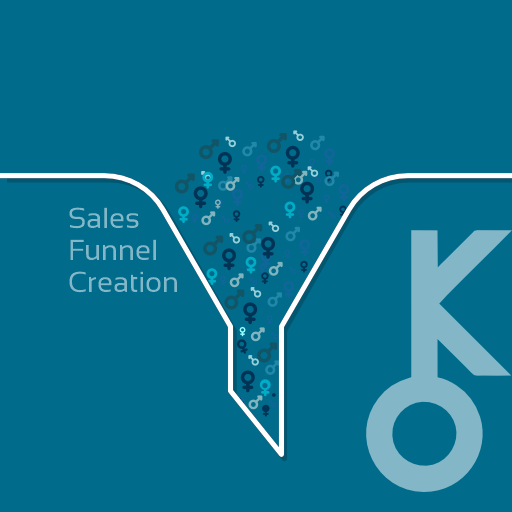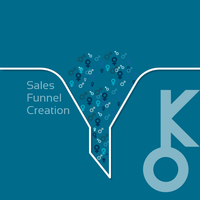Building a Sales Funnel: Attracting Leads

Building a sales funnel is essential for any business looking to attract and convert potential customers. A sales funnel visually represents the customer journey from awareness to purchase, guiding them through each stage of the buying process with the goal of closing a sale. One important aspect of building an effective sales funnel is attracting leads - individuals who have expressed interest in your product or service. In this overview, we will take you through the steps involved in creating a successful sales funnel that attracts and captures leads.
Step 1: Create Awareness
The first step in building a sales funnel is generating awareness about your brand and what you offer. This can be done through various marketing strategies such as content marketing, social media advertising, search engine optimization (SEO), and paid online advertising. By implementing these techniques, you can increase your brand visibility and attract potential leads to your website or landing page.
Step 2: Capture Interest
Once prospects become aware of your brand, it's crucial to capture their interest by providing valuable content or offers that address their needs or pain points. This can be achieved through lead magnets such as ebooks, whitepapers, webinars, or free consultations. By offering valuable resources in exchange for contact information (such as email addresses), you can start building your lead database.
Step 3: Nurture Leads
After capturing leads' contact information, it's important to nurture them by delivering relevant and personalized content through email marketing campaigns or other communication channels. The aim is to build rapport with leads by providing educational content, helpful tips related to their interests/profession/industry/business challenges/etc., and occasional promotional offers that align with their needs.
Step 4: Convert Leads into Customers
As you nurture leads over time, some will naturally progress further down the sales funnel towards making a purchase decision. To increase conversions, it's crucial to understand where each lead stands in their buyer's journey and tailor your communications accordingly. This can be done by implementing marketing automation tools or customer relationship management (CRM) systems, which allow you to track leads' interactions with your content and provide relevant information at each stage.
Step 5: Close the Sale
Once leads are ready to make a purchase decision, it's important to facilitate a seamless buying experience. This can be achieved through optimized landing pages, easy-to-use checkout processes, and clear calls-to-action that drive them towards making a purchase. Additionally, offering incentives such as limited-time discounts or exclusive bonuses can motivate leads to take action.
Step 6: Retain and Upsell Customers
After successfully closing sales, it's crucial to continue nurturing relationships with customers to ensure long-term satisfaction and loyalty. By delivering exceptional customer service, engaging post-purchase emails, and personalized upselling/cross-selling offers based on their previous purchases or preferences, you can maximize your customer lifetime value and turn one-time buyers into repeat customers.
In conclusion, building an effective sales funnel that attracts leads requires careful planning and execution across various stages of the buyer's journey. By creating awareness about your brand, capturing interest through valuable offers, nurturing leads with relevant content/experiences, converting them into customers using targeted communications/tools/strategies, closing sales smoothly with enticing incentives/calls-to-action/offers/checkout processes),and retaining/upping customers through personalized approaches - you can create a successful sales funnel that drives consistent growth for your business.
Sponsored
Sponsored
Sponsored
Explore More:

The Impact of AI and Machine Learning
As technology continues to advance at a rapid pace, businesses are constantly looking...

Future of Sales Funnels
The future of sales funnels is an exciting and promising concept for businesses...

Lessons Learned from Failed Funnels
In the realm of sales funnel creation, case studies serve as valuable resources...

Successful Sales Funnel Examples
In sales funnel creation, case studies play a crucial role in demonstrating the...

Case Studies in Sales Funnel Creation
In the world of sales and marketing, case studies play a crucial role...

Sales Funnel Recovery Strategies
Sales funnels are a critical component of any successful sales and marketing strategy....

Improving Funnel Efficiency
A sales funnel is a crucial component of any business's marketing strategy. It...

Identifying Funnel Leaks
A sales funnel is a systematic approach to guiding potential customers through a...

Sales Funnel Troubleshooting
Sales funnel troubleshooting is the process of identifying and resolving issues or bottlenecks...

Sales Funnel Tools and Software: Landing Page Builders
Sales funnels are essential in driving conversions and increasing revenue for businesses. To...

Sales Funnel Tools and Software: Email Marketing Tools
Sales funnel tools and software refer to the various technologies and platforms available...

Sales Funnel Tools and Software: CRM Software
Sales funnel tools are software programs or applications designed to help businesses track...

Sales Funnel Tools and Software
A sales funnel is a framework used by businesses to guide potential customers...

Measuring Sales Funnel Performance: Analytics and Reporting
Measuring sales funnel performance analytics and reporting is a crucial aspect of any...

Measuring Sales Funnel Performance: Sales Funnel Metrics
Measuring the performance of your sales funnel is crucial for understanding the effectiveness...

Measuring Sales Funnel Performance: Key Performance Indicators (KPIs)
Measuring the performance of a sales funnel is crucial for any business aiming...